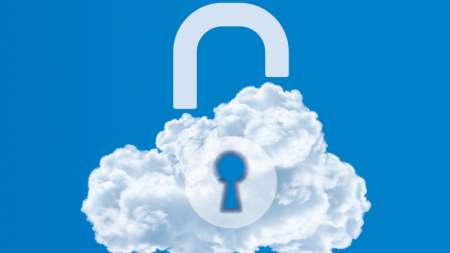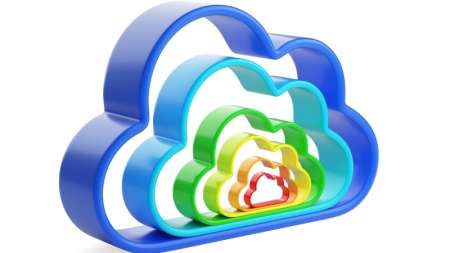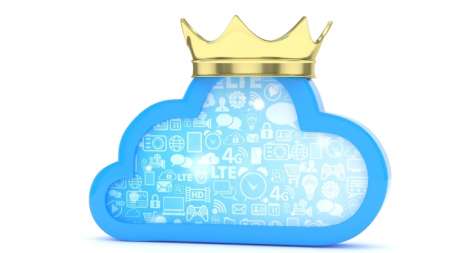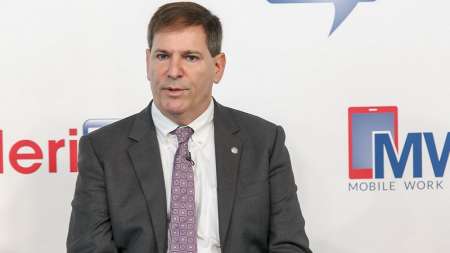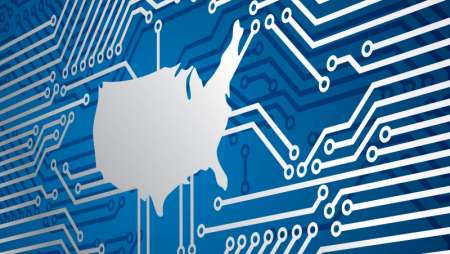David Egts, chief technologist for Red Hat public sector has some words of wisdom for Federal managers seeking ways to move from legacy applications to more agile environments: modernization is not just about adopting new technologies and practices, it is about what happens to the old ones. […]
Sometime in May, the Army will take two armed, autonomous Humvees out onto a gunnery range to test and certify them as combat vehicles, which will make them the first robotic ground vehicles to be OK’d for combat. […]
The Trump Administration proposes spending nearly $45.8 billion on IT investments at major civilian agencies next year, a slight rise from the $45.6 billion in fiscal 2018, according to the 2019 budget proposal released Monday. […]
It is not uncommon today for agencies to use multiple cloud services such as Amazon Web Services for putting up computing resources on demand, Salesforce for customer relationship management applications, and either Google or Microsoft for email and collaboration tools. […]
The Centers for Medicare & Medicaid Services (CMS) want to modernize, but are being held back by a vestige of the 20th century–clunky, outdated technology platforms. […]
Agencies undergoing digital transformation are combining on-premise, hybrid, and multiple cloud solutions into their environments. To that end, agencies need to weave cloud security and protection of on-premise systems into their broader security strategy for a true, defense-in-depth approach. […]
The cloud is not a one-size fits all solution, and, as such, the government is looking to invest in two or three cloud models to support the differing security and risk-tolerance postures of agencies and to leverage various shared services, according to the President’s IT Modernization Report. […]
The Pentagon and White House are chewing over what to do about fitness tracking apps, in wake of the news last week that a global heat map posted online by Strava could be used to identify the whereabouts and activities of military personnel, including those in conflict zones and other sensitive areas such as the halls of the National Security Agency. A heat map transforms data into a map in which values are represented by colors, which in this case includes the location of fitness trackers carried by government employees. […]
As you open your fortune cookie–you might ask, will 2018 be the year of widespread deployment of Data Center Infrastructure Management (DCIM) tools across Federal data centers? […]
As we barrel into Valentine’s Day, seems industry is falling in love again with NIST’s cyber framework makeover. Business groups and the tech sector reacted favorably to the latest update to the National Institute of Standards and Technology (NIST) Framework for Improving Critical Infrastructure, but noted more work needs to be done in several key areas. […]
Latest certification gives Cisco a hat trick in the secure government cloud. […]
MeriTalk has confirmed ringside rumors that Jeff Eisensmith is looking to hang up his gloves at DHS. After more than five years going toe-to-toe with America’s cyber adversaries, we’d like to wish America’s leading CISO the very best as he punches out. […]
The FBI fell far short of its own goals for fighting cybercrime in 2017, according to a Department of Justice (DOJ) audit. The FBI reported disrupting or dismantling 262 high-level criminal operations targeting global U.S. interests, only about half of its goal of 500, and roughly one-tenth of the 2,492 cybercrime operations it broke up in 2014. […]
The Department of Defense (DoD) would like to get rid of the Common Access Card (CAC), but the problem–finding a suitable replacement. It turns out that the replacement won’t be one thing, but multiple biometric identifiers that combine to make out a person’s identity. […]
Verizon is walking the talk on innovation–appointing a new innovation czar to infuse next-generation technologies into its public sector and education offerings. […]
The Government Accountability Office (GAO) isn’t just a compiler of Fed IT’s naughty and nice lists–the agency’s also a consumer of IT. And, it’s rolling plans for IT modernization. […]
Contractor CSRA is set to launch the Defense Information Systems Agency’s (DISA) milCloud 2.0 on Feb. 1–three months ahead of schedule–combining a commercially run cloud offering within the confines of DISA’s data center. In its first phase, milCloud 2.0 will offer scalable Infrastructure as a Service (IaaS) to customers from two locations. […]
It’s a converged world for many Federal data centers, and that trend is likely to continue as agencies move to modernize their information technology infrastructures. […]
If you took a look at Microsoft’s recent government contract announcements and felt like you’re seeing double–well, you wouldn’t be wrong. Azure Government recently received two new FedRAMP certifications from Immigrations and Customs Enforcement (ICE) and the U.S. Air Force. As of Jan. 24, Azure Government now has a FedRAMP High ATO from ICE and a Level-4 ATO for the Air Force’s common computing environment. […]
The idea of a scorecard seems like a quaint notion, conjuring black and white photos of somebody’s grandad in a fedora, licking the pencil tip before recording the latest play at the old ballgame in his program. […]
While the military services and other Department of Defense components get on board toward greater adoption of cloud services, the Defense Information Systems Agency (DISA) doesn’t want them to forget about security, particularly on the part of cloud providers. […]
The Army’s work on the Internet of Battlefield Things (IoBT) is more than just a way to carve out a catchy name for the proliferation of smartphones, tablets, wearable devices, cameras and embedded devices that take the field with military forces. It also underscores the most important element of having those connected devices–the data collection and automated analytics capabilities required to make good use of the information they provide. […]
House Cybersecurity and Infrastructure Protection Subcommittee chairman Rep. John Ratcliffe, R-Texas, put the Continuous Diagnostics and Mitigation (CDM) program under the microscope in a hearing with industry experts last week. […]
Thousands of Federal contractors could find themselves scrambling to comply with stringent cybersecurity requirements after the General Services Administration (GSA) announced it is tightening the rules for protecting sensitive, non-classified data. […]
The Department of Defense (DoD) says it’s getting ready for the big one, but in this case, it’s not talking about a kinetic attack measured in megatons. It’s referring to a cyberattack measured in terabits. […]
A lot of the Army’s most high-profile modernization projects concern complex, expensive weapons systems that emerge from research and development, budgeting, and procurement process inside the halls of the Pentagon and other facilities and outside of the experience of most people. But some key elements of the Army’s efforts to keep pace with the demands of a changing world are so familiar to people at home, at work, or in a coffee shop that they take them for granted. An example of this is good, reliable Wi-Fi. […]
We see lots of moves to IT modernization in motion–but how does it all come together? The White House wants to tie those into a broader program, creating a new ecosystem to fuel government-wide modernization efforts. […]
As momentum continues to build for agencies to implement strategies and technologies to modernize their IT environments, agency managers will have to be careful to avoid missteps that could hamper successful digital transformation. […]
Russian hackers might get all the attention these days, but the Department of Defense (DoD) hasn’t forgotten about WikiLeaks and Edward Snowden. […]
The Federal government wants to speed up adoption of cloud email and collaboration systems. But first it needs an accurate measure of how many agencies have not yet migrated to cloud email. There is definitive data on the benefits of cloud-based email solutions among CFO Act agencies, but no clear data regarding the adoption of cloud-based solutions at small and independent agencies, according to the Report to the President on Federal IT Modernization. […]






